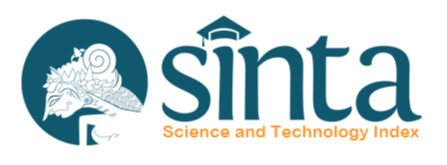Job Safety Analysis and Hazard Identification of Welding Process in Semarang - JSA Method AS/NZS 4360:2004
DOI:
https://doi.org/10.12928/dpphj.v16i1.4613Keywords:
welders, welding, analysis, riskAbstract
Background: The welding workshop in Semarang City is spread over several areas in Semarang City. There are several types of work in welding workshops, namely, cutting raw materials, assembling, welding, grinding, sanding, and painting. This study aimed to analyze occupational safety and health risks in the informal welding workshop using the JSA (Job Safety Analysis) AS/NZS 4360:2004 Risk Management method. Method: This research was conducted using semi-quantitative method with descriptive analysis. A cross-sectional research design was used because data (observations, interviews, filling in risk analysis tables, work accidents, occupational diseases, and controls) were collected at a particular time. The study was conducted in Semarang, Central Java, and the population was all informal welding workshops. Result: This study showed that there are 8 types of welding tasks, 21 potential hazards, and 24 health consequences in a welding process. The total score calculated by multiplying "chance" by "severity" shows that 11 health consequences were acceptable risk while 13 others were high risk. Conclusion: The highest score of occupational health hazards was electric shock due to chipped cable, electric shock due to a chipped short circuit, and wet/rain/cloudy work area. Welders are recommended to follow the proper instruction in the welding process, and each workshop must provide a first aid box for its workers.
References
Esmail RY, Sakwari GH. Occupational Skin Diseases among Building Construction Workers in Dar es Salaam, Tanzania. Ann Glob Health. 2021 Sep 23;87(1):92. doi: 10.5334/aogh.3102. PMID: 34621627; PMCID: PMC8462472.
Piché-Renaud PP, Groves HE, Kitano T, Arnold C, Thomas A, Streitenberger L, Alexander L, Morris SK, Science M. Healthcare Worker Perception of a Global Outbreak of Novel Coronavirus (COVID-19) and Personal Protective Equipment: Survey of A Pediatric Tertiary-Care Hospital. Infect Control Hosp Epidemiol. 2021 Mar;42(3):261-267. doi: 10.1017/ice.2020.415. Epub 2020 Aug 12. PMID: 32782038; PMCID: PMC7468688.
Hassan SM, Nasir U, Anwar K, Talib U. An Assessment of the Level of Awareness and Reported Complaints Regarding Occupational Health Hazards and the Utilization of Personal Protective Equipments Among the Welders of Lahore, Pakistan. Int J Occup Environ Health. 2017 Apr;23(2):98-109. doi: 10.1080/10773525.2018.1426259. Epub 2018 Jan 17. PMID: 29338641; PMCID: PMC6060853.
Gonçalves SBB, Sakae TM, Magajewski FL. Prevalence and Factors Associated with Work Accidents in A Metal-Mechanic Company. Rev Bras Med Trab. 2018 Mar 1;16(1):26-35. doi: 10.5327/Z1679443520180086. PMID: 32270071; PMCID: PMC7104819.
Burgess-Limerick R. Participatory ergonomics: Evidence and Implementation Lessons. Appl Ergon. 2018 Apr;68:289-293. doi: 10.1016/j.apergo.2017.12.009. Epub 2017 Dec 20. PMID: 29409647.
Chaiklieng S. Health Risk Assessment on Musculoskeletal Disorders Among Potato-Chip Processing Workers. PLoS One. 2019 Dec 3;14(12):e0224980. doi: 10.1371/journal.pone.0224980. PMID: 31794549; PMCID: PMC6890250.
Chen H, Duan J, Yang Z, Xiong W, Deng L. Picosecond Laser Seal Welding of Glasses with a Large Gap. Opt Express. 2019 Oct 14;27(21):30297-30307. doi: 10.1364/OE.27.030297. PMID: 31684279.
Lewis J. Welding Safety Best Practices. Occup Health Saf. 2017 Apr;86(4):22-3. PMID: 30281272.
Kwaku Tetteh KK, Owusu R, Axame WK. Prevalence and Factors Influencing Eye Injuries among Welders in Accra, Ghana. Adv Prev Med. 2020 Sep 16;2020:2170247. doi: 10.1155/2020/2170247. PMID: 33014472; PMCID: PMC7516735.
Zahiri Harsini A, Ghofranipour F, Sanaeinasab H, Amin Shokravi F, Bohle P, Matthews LR. Factors Associated with Unsafe Work Behaviours in an Iranian Petrochemical Company: Perspectives of Workers, Supervisors, and Safety Managers. BMC Public Health. 2020 Jul 31;20(1):1192. doi: 10.1186/s12889-020-09286-0. PMID: 32736619; PMCID: PMC7393823.
Arfan I, Rochmawati R, Zulmianto IA. Relationship Characteristics of Welding Workers on Visual Loans in the Welding Industry, Pontianak City. J Ind Hyg Occup Heal. 2019;4(1):58. doi: http://dx.doi.org/10.21111/jihoh.v4i1.3442
Peckham TK, Baker MG, Camp JE, Kaufman JD, Seixas NS. Creating a Future for Occupational Health. Ann Work Expo Health. 2017 Jan 1;61(1):3-15. doi: 10.1093/annweh/wxw011. PMID: 28395315.
Sakowski P, Marcinkiewicz A. Health Promotion and Prevention in Occupational Health Systems in Europe. Int J Occup Med Environ Health. 2019 Jun 14;32(3):353-361. doi: 10.13075/ijomeh.1896.01384. Epub 2018 Oct 25. PMID: 30356227.
Thepaksorn P, Thongjerm S, Incharoen S, Siriwong W, Harada K, Koizumi A. Job Safety Analysis and Hazard Identification for Work Accident Prevention in Para Rubber Wood Sawmills in Southern Thailand. J Occup Health. 2017;59(6):542–51. doi: 10.1539/joh.16-0204-CS. Epub 2017 Oct 7. PMID: 28993571; PMCID: PMC5721276.
Xu Q, Yu F, Li F, Zhou H, Zheng K, Zhang M. Quantitative Differences Between Common Occupational Health Risk Assessment Models. J Occup Health. 2020 Jan;62(1):e12164. doi: 10.1002/1348-9585.12164. PMID: 32949432; PMCID: PMC7507535.
Ni G, Zhu Y, Zhang Z, Qiao Y, Li H, Xu N, Deng Y, Yuan Z, Wang W. Influencing Mechanism of Job Satisfaction on Safety Behavior of New Generation of Construction Workers Based on Chinese Context: The Mediating Roles of Work Engagement and Safety Knowledge Sharing. Int J Environ Res Public Health. 2020 Nov 12;17(22):8361. doi: 10.3390/ijerph17228361. PMID: 33198114; PMCID: PMC7697761.
Mehrifar Y, Zeverdegani SK, Rismanchian M. Chemical Pollutants in the Respiratory Zone of Welders: Determination of Concentrations and Hazard Analysis. Work. 2020;67(3):591-598. doi: 10.3233/WOR-203272. PMID: 32925157.
Black M, Karki J, Lee ACK, Makai P, Baral YR, Kritsotakis EI, Bernier A, Fossier Heckmann A. The Health Risks of Informal Waste Workers in the Kathmandu Valley: A Cross-Sectional Survey. Public Health. 2019 Jan;166:10-18. doi: 10.1016/j.puhe.2018.09.026. Epub 2018 Nov 9. PMID: 30419409.
Saracci R. The Hazards of Hazard Identification in Environmental Epidemiology. Environ Health. 2017 Aug 9;16(1):85. doi: 10.1186/s12940-017-0296-3. PMID: 28793913; PMCID: PMC5550949.
Beyene Gebrezgiabher B, Tetemke D, Yetum T. Awareness of Occupational Hazards and Utilization of Safety Measures among Welders in Aksum and Adwa Towns, Tigray Region, Ethiopia, 2013. J Environ Public Health. 2019 Jan 21;2019:4174085. doi: 10.1155/2019/4174085. PMID: 30805014; PMCID: PMC6360553.
Dev M, Bhardwaj A. Respiratory Symptoms and Spirometric Abnormalities Among Welders in the Welding Workplace of the Indian Unorganized Sector. Work. 2021;69(3):885-894. doi: 10.3233/WOR-213521. PMID: 34180459.
Martin P, Bladier C, Meek B, Bruyere O, Feinblatt E, Touvier M, Watier L, Makowski D. Weight of Evidence for Hazard Identification: A Critical Review of the Literature. Environ Health Perspect. 2018 Jul 17;126(7):076001. doi: 10.1289/EHP3067. PMID: 30024384; PMCID: PMC6108859.
Torén K, Blanc PD, Naidoo RN, Murgia N, Qvarfordt I, Aspevall O, et al. Occupational Exposure to Dust and to Fumes, Work as a Welder and Invasive Pneumococcal Disease Risk. Occup Environ Med. 2020;77(2):57–63. doi: 10.1136/oemed-2019-106175. Epub 2019 Dec 17. PMID: 31848233; PMCID: PMC7029234.
Stanislawska M, Janasik B, Kuras R, Malachowska B, Halatek T, Wasowicz W. Assessment of Occupational Exposure to Stainless Steel Welding Fumes – A Human Biomonitoring Study. Toxicol Lett [Internet]. 2020;329(May):47–55. Available from: https://doi.org/10.1016/j.toxlet.2020.04.019
Riccelli MG, Goldoni M, Poli D, Mozzoni P, Cavallo D, Corradi M. Welding Fumes, a Risk Factor for Lung Diseases. Int J Environ Res Public Health. 2020;17(7). doi: 10.3390/ijerph17072552. PMID: 32276440; PMCID: PMC7177922.
Suárez Sánchez FA, Carvajal Peláez GI, Catalá Alís J. Occupational Safety and Health in Construction: A Review of Applications and Trends. Ind Health. 2017 Jun 8;55(3):210-218. doi: 10.2486/indhealth.2016-0108. Epub 2017 Feb 7. PMID: 28179610; PMCID: PMC5462637.
Nelson CA, Elder DE, Elenitsas R, Weir M. Conjunctivitis, Mucosal Erosions, and Moist Cutaneous Plaques. JAAD Case Rep. 2018 Jan 12;4(2):117-119. doi: 10.1016/j.jdcr.2017.04.017. PMID: 29349113; PMCID: PMC5767905.
Chartres N, Bero LA, Norris SL. A Review of Methods Used for Hazard Identification and Risk Assessment of Environmental Hazards. Environ Int. 2019 Feb;123:231-239. doi: 10.1016/j.envint.2018.11.060. Epub 2018 Dec 8. PMID: 30537638.
Kwaku Tetteh KK, Owusu R, Axame WK. Prevalence and Factors Influencing Eye Injuries among Welders in Accra, Ghana. Adv Prev Med. 2020;2020:1–8. doi: 10.1155/2020/2170247. PMID: 33014472; PMCID: PMC7516735.
Falcone LM, Zeidler-Erdely PC. Skin Cancer and Welding. Clin Exp Dermatol. 2019 Mar;44(2):130-134. doi: 10.1111/ced.13783. Epub 2018 Oct 2. PMID: 30280417; PMCID: PMC6415292.
Downloads
Published
Issue
Section
License
Copyright (c) 2021 Universitas Ahmad Dahlan

This work is licensed under a Creative Commons Attribution-ShareAlike 4.0 International License.
Authors transfer the copyright and grant the Disease Prevention and Public Health Journal right of first publication with the work simultaneously licensed under a Creative Commons Attribution License (CC BY-SA 4.0) that allows others to share (copy and redistribute the material in any medium or format) and adapt (remix, transform, and build upon the material) the work for any purpose, even commercially with an acknowledgement of the work's authorship and initial publication in Disease Prevention and Public Health Journal. Authors are able to enter into separate, additional contractual arrangements for the non-exclusive distribution of the journal's published version of the work (e.g., post it to an institutional repository or publish it in a book), with an acknowledgement of its initial publication in Disease Prevention and Public Health Journal. Authors are permitted and encouraged to post their work online (e.g., in institutional repositories or on their website) prior to and during the submission process, as it can lead to productive exchanges, as well as earlier and greater citation of published work (See The Effect of Open Access).

This work is licensed under a Creative Commons Attribution-ShareAlike 4.0 International License.







